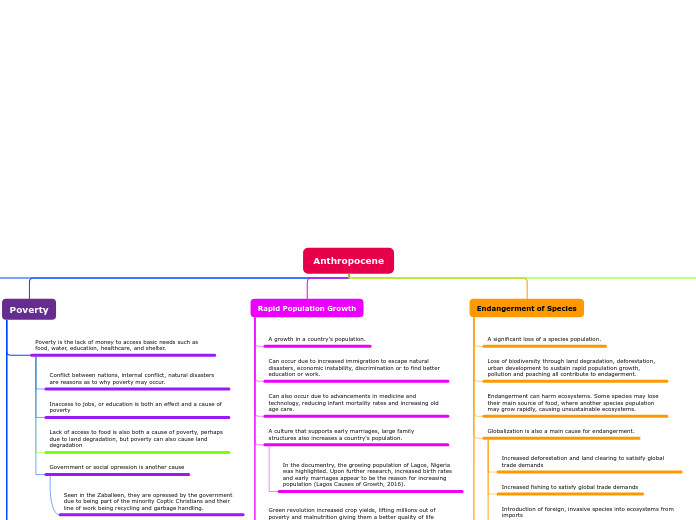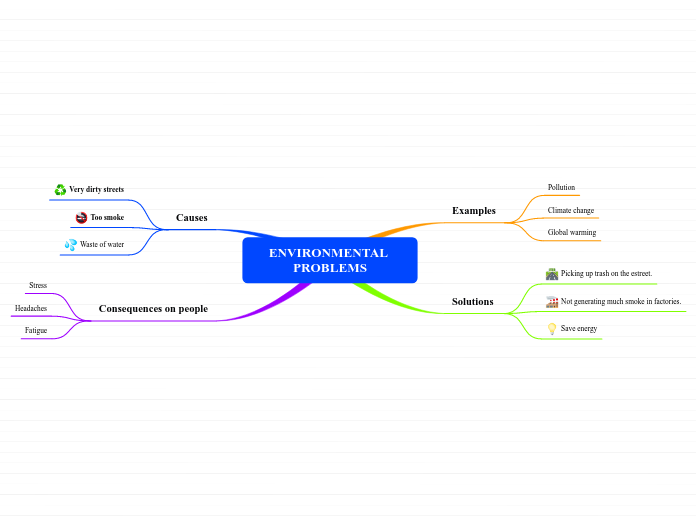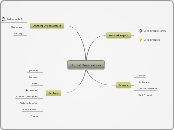Anthropocene
Land Degradation
Solutions include providing farming education, promoting sustainable methods and indeginous-to-land practises.
Reducing deforestation as forests play a huge role in keeping groundwater underground and sustaining the carbon and nitrogen cycles.
Reducing dependancy on pesticides and fertilizers which not only harm animals but destroy soil overtime
If agriculture productivity declines, a country's GDP can too, through loss of export products and loss of population productivity
Globally, 1/3 of the Earth's land is degraded (Watts, 2017). However, sub-saharan Africa faces the higest amounts of land degradation due to their naturally dry climate and poor farming practises. (Soil Degradation: The Problems and How to Fix Them, 2021)
Deforestation accounts for 60% of land degradation (Muthuri, 2018) , and there was a segment in the documentry showing deforestation in Lagos, Nigeria.
Globally, 85% of forests have been destroyed for human activity, causing land degradation at a massive scale (Anthropocene: The Human Epoch, 2020).
Earliest examples date back to 2,400 BC but green revolution and industrial revolution caused a great increase of soil degradation in the mid 20th century. (Land Degradation - Background | GEOG | Geographical Sciences Department | University of Maryland, 2012)
Farmers are effected, loss of fertile land, a source of income, and food. Citizens are also affected due to a loss of food or increased pricing on what is available.
In Germany, RWE is facing controversy for destroying 4 farming-based towns to build a river as mentioned in the documentry.
Loss of income for farmers and inflation in the food market could either be a trigger for poverty or worsen it in some households
Land degradation occurs due to poor farming practises, overgrazing, poor air/water quality, poor irrigation, and increased urban development.
Increased population demands a higher usage of electrcity and water, reducing quality/availibility for farming
Poor farming practises are often a result of lack of financing in their profession, either farmers are too poor or government is unable to allocate enough funds
Land degradation is human activity that reduces the quality, fertility, and biodiversity of a land mass.
Loss of biodiversity and quality of land leads to increased risk of endangerment for certain species
Endangerment of Species
Solutions include slowing down human activity such as logging, overfishing, search and consumption of fossil fuels
Calling on governments to stop poaching through international organizations or media protests as shown in the documentry.
Reducing use of pesticides and fertilizers, switching to organic substances or ones with less negative effects
Reducing land, air, and aquatic pollution
The Green Revolution and its subsequent introduction to pesticides and fertilizers are critically endangering the bee population (Gill, 2021).
The endangerment of bees and other pollinators reduces biodiversity and agricultural productivity.
Examples of endangerd animals were shown in the documentary, such as Sumatra tigers and Okapis
Globalization is also a main cause for endangerment.
The desire for foreign, rare, and valuable ivory tusks builds a market where rich people overseas are willing to pay high prices
A driver for poachers to do the risky, illegal and unethical work they do is poverty. In a study conducted, 96% of poachers said they would stop if they had another source of income, and another 46% were significantly poor (Gaworecki, 2017).
Shockingly, 10,000 elephants had a street value of 150 million dollars
The documentry had multiple segments where people talked about the illegal and unethical poaching of elephants for their ivory tusks
As shown in the documentry, a worker from Prestige Crafts, in Hong Kong, explained how some ivory carvings could go for millions of dollars
Introduction of foreign, invasive species into ecosystems from imports
Increased fishing to satisfy global trade demands
Increased deforestation and land clearing to satisify global trade demands
Endangerment can harm ecosystems. Some species may lose their main source of food, where another species population may grow rapidly, causing unsustainable ecosystems.
Loss of biodiversity through land degradation, deforestation, urban development to sustain rapid population growth, pollution and poaching all contribute to endagerment.
A significant loss of a species population.
Rapid Population Growth
Solutions to slow population growth include promoting education for women, stopping early marriages
Solutions from how to stop poverty are applicable here, since poverty is a main driver of population growth.
Increased demand for housing, farming, and other facilities needing land.
Increasing deforestation and therefore, land degradation
An increased population can put a strain on resources
A mismanagement or lack of enough funds can reduce a populations access to healthcare and education, reducing their quality of life.
Green revolution increased crop yields, lifting millions out of poverty and malnutrition giving them a better quality of life (CK-12 Foundation, 2022).
A culture that supports early marriages, large family structures also increases a country's population.
In the documentry, the growing population of Lagos, Nigeria was highlighted. Upon further research, increased birth rates and early marriages appear to be the reason for increasing population (Lagos Causes of Growth, 2016).
Can also occur due to advancements in medicine and technology, reducing infant mortality rates and increasing old age care.
Can occur due to increased immigration to escape natural disasters, economic instability, discrimination or to find better education or work.
A growth in a country's population.
Poverty
Solutions include increasing work oppurtunities, increasing minimum wage and enforcing it along with working regulations
Reversing or preventing more land degradation to ensure agriculture work remains and people are well nourished
Working to redefine cultural norms, that education is important for children, normalizing family planning and contraception education
Increased crime rates, mental health problems, addiction problems, and spread of illnesses/diseases
Homeless is rampant when poverty occurs, many need to live in slums or as the documentry showed, landfills.
In the Dandora landfill of Kenya, it was said that 250,000 people reside in the landfill
To increase household incomes and stay alive, families have alot of children, increasing the population
Poverty also ensures a lack of education, and therefore a lack of family planning or contraceptive knowledge
Child labour is often rampant in developing countries, where law enforcement is weak.
This was shown in the documentry, where children who looked young enough to be toddlers were working in logging factories of Lagos, Nigeria
Low GDP of a country is an effect of poverty. Lack of high earning jobs mean low tax revenue, and lack of important educated professionals to provide important resources such as education and healthcare.
Poverty is the lack of money to access basic needs such as food, water, education, healthcare, and shelter.
Government or social opression is another cause
Seen in the Zaballeen, they are opressed by the government due to being part of the minority Coptic Christians and their line of work being recycling and garbage handling.
Lack of access to food is also both a cause of poverty, perhaps due to land degradation, but poverty can also cause land degradation
Inaccess to jobs, or education is both an effect and a cause of poverty
Conflict between nations, internal conflict, natural disasters are reasons as to why poverty may occur.
Land Pollution
Solutions include using biodegradable products, reducing plastic production and consumption
Globally, we produce 92 million tons of textile waste a year, promoting second hand clothing or reducing fast fashion could help significantly (Textile & Fashion Waste Statistics: Facts about Clothing in Landfills, 2022)
Recycling waste and promoting innovation, such as the case of the Zaballeen.
The Dandora Landfill of Kenya was also covered in the documentry.
850 tonnes of waste gathered from the city of Nairobi is dumped in this 30 acre landfill daily (EJOLT, 2015).
Mining is another cause, one that was explored in the documentry.
Norilsk is a Russian city where the mining of nickel, copper, and cobalt are the main industries and employ majority of the population (“Norilsk | Russia | Britannica,” 2022).
However it is considered one of the world's most polluted cities, and Russia's most polluted city (TVO | Current Affairs, Documentaries and Education, 2022).
A cause of land pollution is increased population and more waste prodcution
Build up of land pollution can contaminate soil and water sources.
Land pollution can cause habitat destruction and endanger many plant and animal species
Land pollution contributes to soil degradation, when it is contaminated fertility and quality is lost.
The accumulation of solid and liquid waste both at and under ground level.









